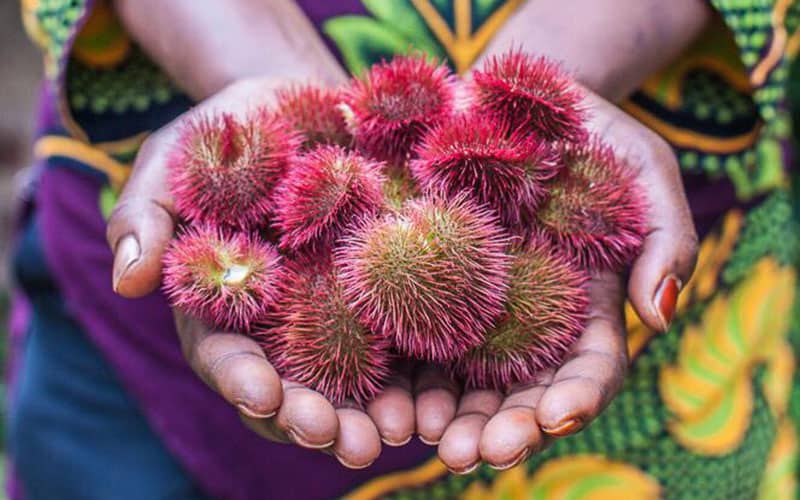In the first episode of the Travels of the Papillae we take you to the discovery of Rambutan, with its unusual appearance - bright colors and shapes a little like a sea urchin - and with extraordinary nutritional and antioxidant properties.
Due to his strange shape, he was the protagonist of an episode of After Life on Netflix, in which he played the part of an alien fruit.
It is an exotic fruit, coming from Sri Lanka and other regions of Southeast Asia but also widespread in East Africa. We met him during our Wami Water Expedition in Tanzania, and we fell in love with it.
The name comes from the Malay word "Rambut", what does it mean literally hair, in reference to the numerous protuberances of the fruit. Inside, the fruit looks like a peeled grape, the taste could be described as sweet and creamy, with a slight acid note, and a sort of floral aroma in addition.
Power of the Rambutan, come to me!
And who would have thought that this little guy had all these powers: from lightness (75 ca. per fruit) al improved digestion - the soluble fiber in Rambutan can dissolve in water and form a gelatinous substance in the intestine which helps slow down digestion and the absorption of nutrients - al strengthening of the immune system.
The pulp of Rambutan contains the same dose of fiber that can contain the same amount of apples, oranges and pears (which well, in size are much larger). Furthermore, by eating about 5-6 Rambutan, take 50% of the Vitamin C dose required by your daily requirement.
It is rich in copper, which allows you to regenerate and maintain strong brain, bone and heart cells. It also contains a certain amount of: manganese, phosphorus, potassium, magnesium, iron and zinc.
In short, nutrients and antioxidants in large quantities!

Rambutan, a surprise to shell out!
But first ... how to tell if the fruit is ripe? The local populations of Sri Lanka teach to recognize the ripeness of the fruit by observing the protuberances: the redder they are, the more ripe the fruit.
Rambutan must be shelled to be eaten. To do this: cut the circumference of the fruit with a knife, squeeze the opposite sides of the cut, and, in the end, the fruit pops out, like a surprise in an Easter egg.
Don't be afraid of its thorns, they are like little tentacles.
Also, there may be some juice contained in the shell if the fruit is fresh enough. Juice that is very sweet and tasty if you can pick it up before it overflows.
The pulp can add a sweet flavor to a variety of recipes, ranging from salads and curries to puddings and ice cream.
You can find it in all the ethnic markets of your city, as well as online. You just have to try it!
